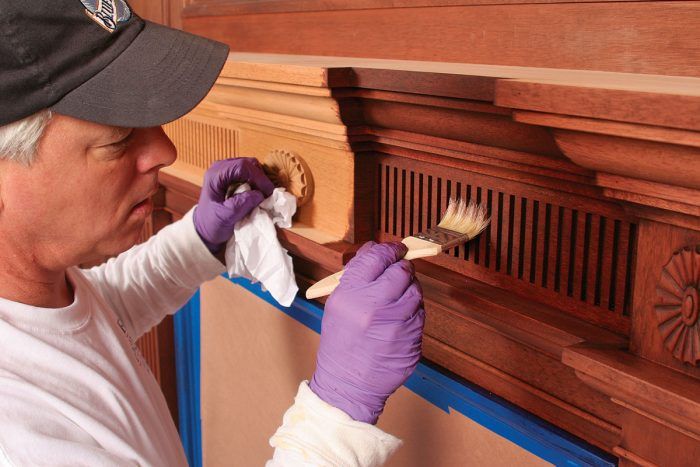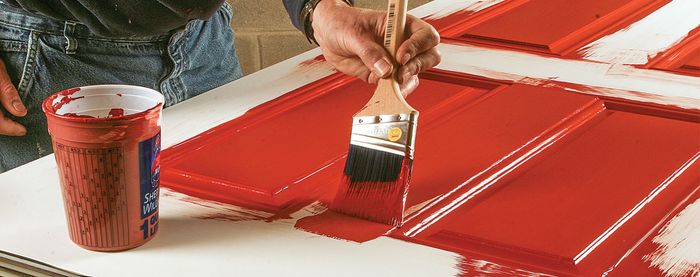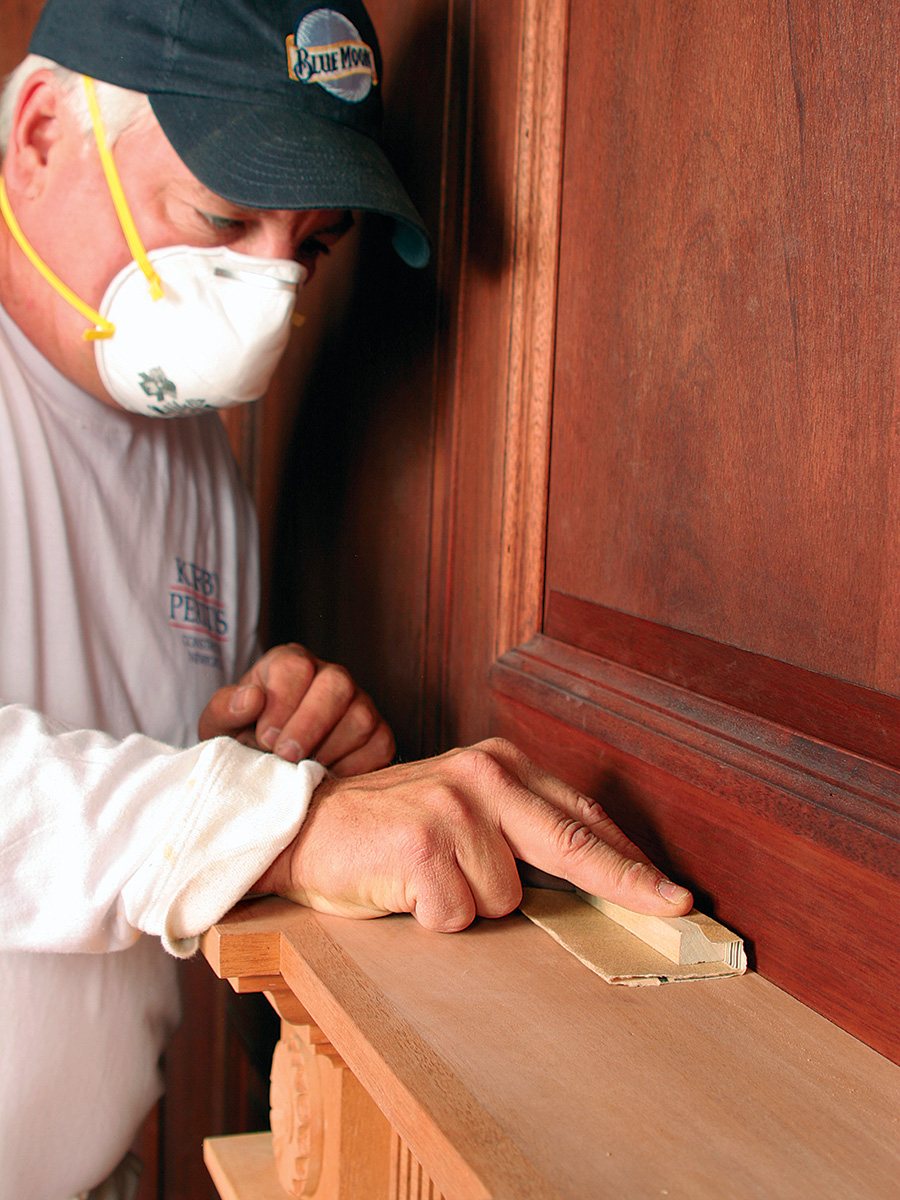Finishing Secrets for Furniture-Grade Trim
Whether you’re staining a door, built-in cabinetry, or the millwork in between, follow these steps for a flawless finish.

Synopsis: Finishing expert Tim Leahy has spent more than 10 years working as a foreman on a crew that restores historic mansions and homes in Newport, R.I. For Leahy, the best results for finishing furniture-grade trim mean more than just applying the stain; meticulous prep work is the only way to start. First, sand all surfaces with a sequence of progressively finer sandpapers. Next, apply the stain in a two-step process: brushing it on, then wiping it down with a clean rag. Third, fill in the grain to accent the grain and to smooth the surface of open-grain woods. Finally, create a topcoat by brushing or spraying on three to four coats of finish. This article includes a sidebar about the secret of repairing blemishes.
As far as work in the trades is concerned, I’m a lucky guy. For the past 12 years, I’ve spent my days as a finish foreman with a company that remodels and restores historic mansions and builds new homes in Newport, R.I. Our carpenters install custom-milled trim, cabinetry, doors, and windows. Then my crew and I go in and finish them. Given all that—and the ocean views—it’s a sweet deal.
There’s no doubt that the craftsmanship that precedes us sets the stage for us to do our best work. But delivering flawless finishes is no easy task. Staining and clear-coating the mahogany mantelpiece featured here—and the paneled library that it’s in—took three of us two weeks to complete. Yes, we were methodical and took great care when applying the stain and the final clear coats. but nothing got more of our attention than the prep we did before popping the lid off the first can of stain.
Sand every inch
On one of our recent jobs, someone accidentally dripped water on an oak floor that my crew and I had just prepared for stain. unfortunately, that someone never told us what had happened. When we applied the stain, there—in deep, dark splotches—was the evidence. The water had raised the grain, creating an uneven surface. Unlike a layer of paint, which hides the wood, stain highlights it. Unfortunately, stain also highlights watermarks, fingerprints, dried glue, and swirl marks left by power sanders. To get consistent results with stain, you can’t just sand the blemishes; you need to sand the entire project evenly.
Sanding everything evens the porosity of the wood. Let me explain: When wood is run through a planer or shaper, its outer fibers are compressed, which leaves it with a glazed or glossy appearance. If stain is applied directly over those compressed fibers, it doesn’t penetrate the wood the way it’s meant to. Sanding opens the fibers evenly, allowing stain to soak into the wood.
The amount of sanding you should do depends on the quality of the wood. If you are staining molding or cabinetry made at a high-quality woodshop or in your own shop, chances are you’ll need to sand the surface only lightly. Wood from big-box stores and moldings or cabinetry that has been exposed to temperature and humidity changes will likely need more work. In either case, using the proper grit sequence is important.
Because of the high quality of wood we work with, we typically use a two- or three step sanding sequence. We thoroughly inspect all the wood first for the problem areas mentioned above, as well as for planer snipe. We do this by holding a light at a 45° angle close to the wood so that the light rakes across the surface. Don’t use halogen work lights; they create too much glare. An aluminum clip-on work light with a 150w bulb works best.
We remove the illuminated trouble spots by sanding along the grain with 120-grit sandpaper. We also lightly sand sharp corners and edges at this point because they splinter easily and don’t take finish well.
Once the imperfections are removed, we sand the entire surface with 120-grit paper. Then we sand with 150-grit paper, still working with the grain. We maintain even pressure as we sand, making sure that we don’t bear down with our fingertips. Doing so could leave sanding marks and stripes.
For more photos and the secret to dealing with blemishes, click the View PDF button below.







View Comments
If the historic paint needs to be stripped off completely for staining and is thicker that one layer, use an infrared heat stripper for the bulk of the paint and then wet sand. This keeps the toxic lead dust controlled.